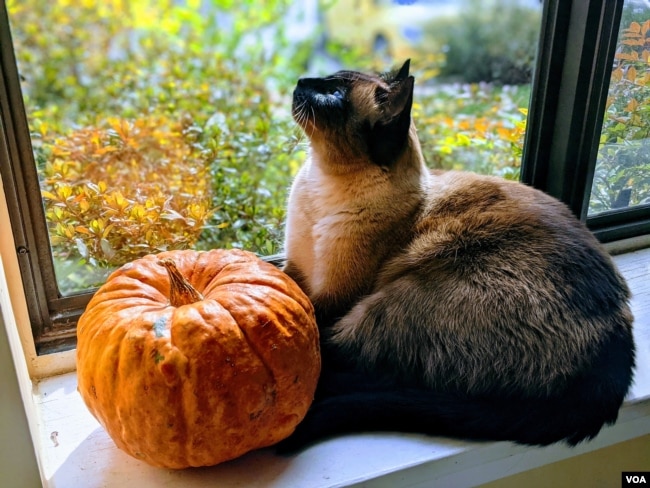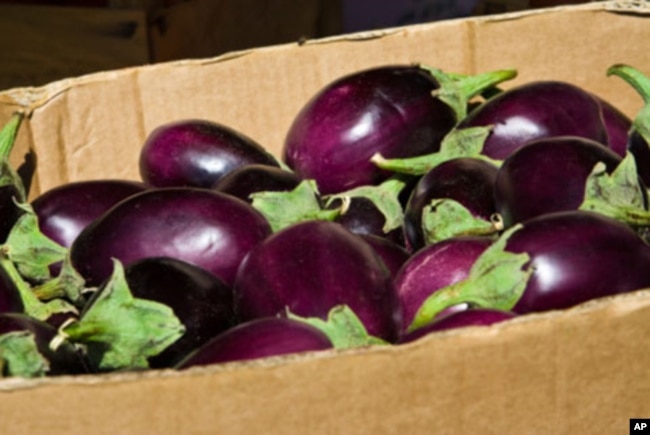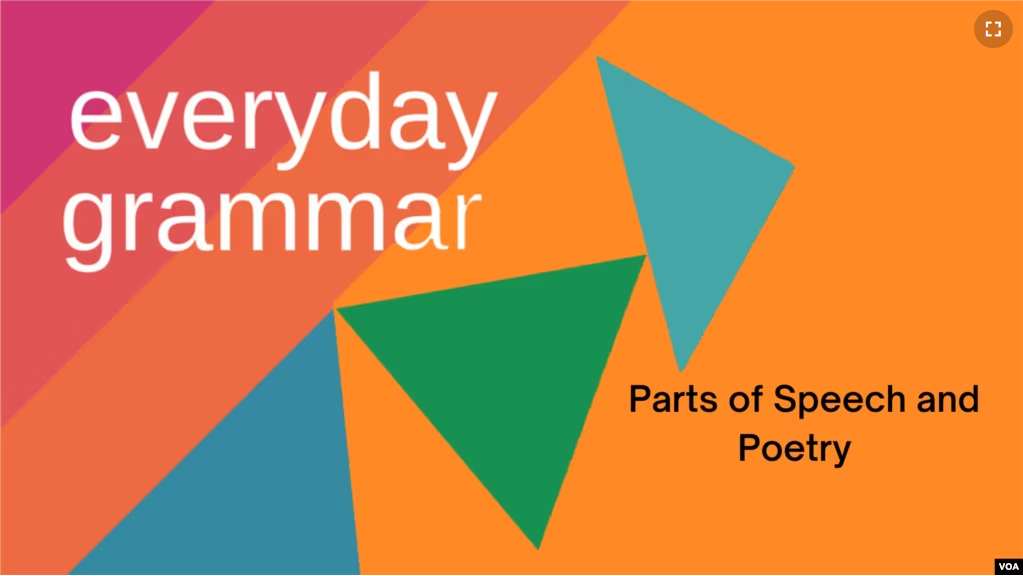Have you ever written a poem in English? Some of you have written to us in recent weeks asking us about writing and sharing poems.
When I was a teacher at a university, I taught my ESL students creative writing. We spent time learning to use parts of speech to write poems.
In today’s Everyday Grammar, we will look at two different kinds of poems that can be easily written using several parts of speech, the cinquain and a diamante poem or diamond poem.
Let’s start with the cinquain.
Cinquain
The cinquain poem gets its name from the number five in the French language, or “cinq.” It has five lines. One form of a cinquain uses parts of speech, like nouns, verbs, adjectives and adverbs.
Let’s look at the structure of a cinquain.
The first line is the subject. Keep this to one word. Use a noun.
The second line is two adjectives that describe the subject.
Line three includes three action words. These can be either verbs or the -ing form of verbs called gerunds.
Line four uses four words that describe the subject. This line often brings attention to the mood or emotion of the poem. This can be a simple phrase, or group of words expressing a thought.
And lastly, line five is one word that again reflects the subject of the poem in the first line. This can be a synonym, or another word that has the same meaning as the subject.
Let’s look at an example:
Spring
Warmer, brighter
Planting, watering, blooming
Sweet smell of flowers
Gardens

Diamante or diamond poem
Now let’s look at a similar poem using parts of speech. The diamante poem or diamond poem is a seven-line poem. It is shaped like a diamond. Let’s look at the structure:
The first line is only one noun.
Line two has two adjectives.
The third line has three verbs.
Line four has four nouns.
The fifth line is like the third line and has three verbs.
The sixth line has two adjectives like the second line.
The seventh line is a one-word noun.
Here again is a description of the shape, the line structure, and the parts of speech:
Line 1: noun
Line 2: adjective, adjective
Line 3: verb, verb, verb
Line 4: noun, noun, noun, noun
Line 5: verb, verb, verb
Line 6: adjective, adjective
Line 7: noun
A Diamante poem can either express synonyms with the first and last lines describing similar ideas, or the poem can change to show the opposite meaning of the subject. The first and last lines would then be antonyms, or opposites. The second half of the poem could even explore something with similarities to the subject but with important differences.
Let’s look at an example of each.
Synonym:
Cat
Small, cute
Sleeping, running, climbing
Toys, trees, birds, food
Jumping, meowing, cuddling
Fluffy, curious
Feline

Antonym:
Fruit
Juicy, sweet
Growing, ripening, picking
Apples, berries, tomatoes, eggplant
Eating, cooking, pickling
Healthy, savory
Vegetables

In the last poem, “fruit” and “vegetables” are different. In the fourth line, the poem changed from describing fruit to describing vegetables. Tomatoes and eggplant are often thought of as vegetables in the United States, but scientifically they are fruit. Line four shows a change from the subject of the first part of the poem to the new subject of the second half, connecting the two in only a few words.
Now it’s your turn
Today we looked at ways we can use parts of speech to create two kinds of poems. The cinquain poem and the diamond poem.
The Cinquain poem has five lines. Lines two through five expand on the subject of the poem, which is the first line.
The diamond-shaped poem has seven lines containing four parts of speech. This poem structure can be like a cinquain with synonyms of the first and last lines, or antonyms can be used to create a contrast or to show a difference in the poem.
Now it’s your turn! Create a cinquain or diamond poem of your own! Try to choose a simple subject, something that you know well. You have the structure. Just think about describing your subjects with different parts of speech.
Send your poems to learningenglish@voanews.com.
Or share your poems in the comments below!
I’m Faith Pirlo. And I’m Jill Robbins.
Faith Pirlo wrote this lesson for VOA Learning English.
___________________________________________________________________
Words in This Story
mood – n. an emotional state of mind or feeling
reflects – v. to show (something) or make (something) known
bloom – v. to produce flowers
cute – adj. having a pleasing, youthful appearance
meow – n. or v. the sound a cat makes
cuddle – v. to hold (someone or something) in your arms in order to show affection
fluffy – adj. light and soft or airy
feline – n. a word that describes a cat or something that is like a cat
juicy – adj. containing a lot of liquid or juice
ripen – v. to become ready to eat
berry – n. a small fruit (such as a strawberry, blueberry, or raspberry) that has many small seeds (plural berries)
eggplant – n. a vegetable with a smooth, dark purple skin.
pickle – v. a method of preserving food in vinegar, salt brine or a similar mixture.
savory – adj. having a spicy or salty quality without sweetness
